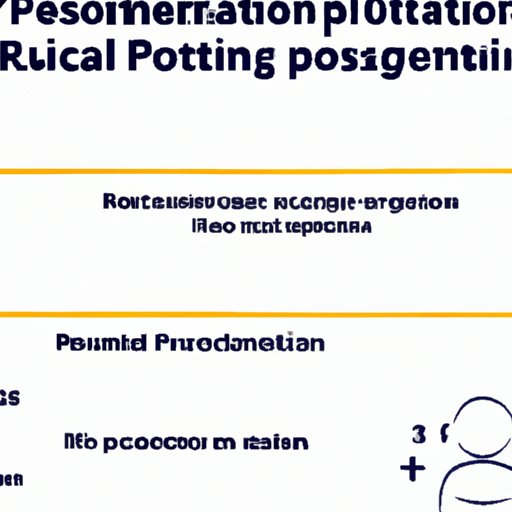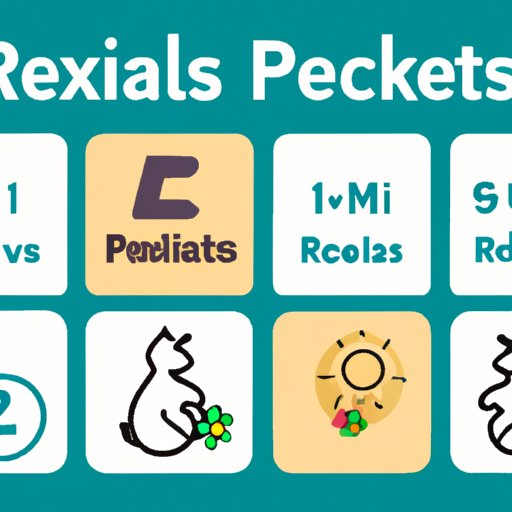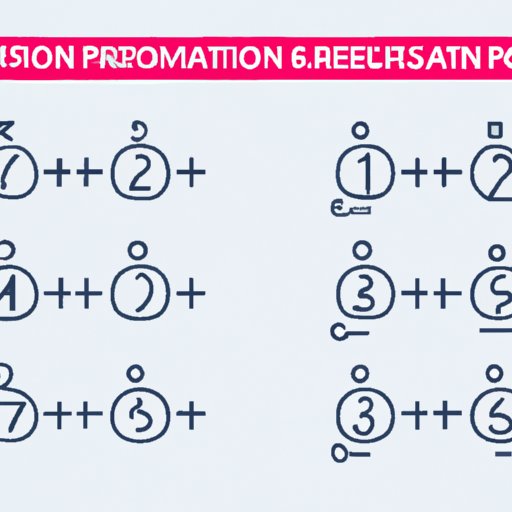Introduction
Proportional reasoning is an important tool for solving a variety of problems. It allows us to compare the relationships between two or more quantities in order to determine the solution. In this article, we’ll explore when you can use proportional reasoning to solve a problem, how to apply it in everyday situations, and provide some tips and tricks for success.
Definition of Proportional Reasoning
Proportional reasoning is a type of mathematical thinking that involves recognizing and understanding the relationship between two or more quantities. When faced with a problem, one must first identify the ratio or rate between the different quantities involved, then use that information to calculate the answer. Proportional reasoning is often used in real-world situations, such as calculating discounts, figuring out the cost of items, and solving distance and time problems.

Overview of Problems It Can Solve
Proportional reasoning can be used to solve a wide range of problems. It can be especially helpful when dealing with problems involving rates, ratios, proportions, and percentages. For example, it can be used to determine the percentage of a number, calculate discounts and markups, and convert units of measure. It can also be used to solve distance and time problems, such as determining how long it will take to get from one place to another.

How to Apply Proportional Reasoning in Everyday Situations
Using proportional reasoning to solve everyday problems is relatively simple. All you need to do is follow a few basic steps:
Step-by-Step Guide
- Identify the problem and the relevant relationships between the quantities.
- Analyze the relationships between the quantities and determine the rate or ratio.
- Use the rate or ratio to calculate the answer.
Examples of Common Problems
Here are some common problems that can be solved using proportional reasoning:
- Calculating discounts and markups.
- Figuring out the cost of items after a sale.
- Solving distance and time problems.
- Determining the percentage of a number.
- Converting units of measure.
A Step-by-Step Guide to Using Proportional Reasoning
Now that you know what types of problems can be solved using proportional reasoning, let’s look at a step-by-step guide for applying it:
Identifying the Problem
The first step is to identify the problem and the relevant relationships between the quantities. For example, if you’re trying to figure out the cost of an item after a 10% discount, you need to recognize the relationship between the original cost and the discounted cost.
Analyzing the Relationships Involved
Once you’ve identified the problem, the next step is to analyze the relationships between the quantities. In our example, the relationship between the original cost and the discounted cost is a 10% discount. This means that for every $1 of the original cost, the discounted cost is 90 cents.
Calculating the Answer
Finally, you can use the rate or ratio to calculate the answer. In our example, if the original cost is $10, the discounted cost would be $9 (10 x 0.90 = 9).
Examples of Proportional Reasoning in Action
Let’s look at a few examples of proportional reasoning in action:
Example 1
You’re shopping for a new pair of shoes that are on sale for 25% off. How much will they cost after the discount?
Solution: First, identify the relationship between the original price and the discounted price. In this case, the relationship is a 25% discount. This means that for every $1 of the original price, the discounted price is 75 cents. If the original price is $100, the discounted price would be $75 (100 x 0.75 = 75).
Example 2
You’re driving from your house to your friend’s house, which is 30 miles away. If you drive at a speed of 60 mph, how long will it take you to get there?
Solution: First, identify the relationship between the distance and the time. In this case, the relationship is a rate of 60 mph. This means that for every 1 hour of time, you will travel 60 miles. If the distance is 30 miles, it will take you 0.5 hours (30/60 = 0.5) to get there.
Example 3
You want to buy a new TV that costs $500. You have a coupon for 10% off. How much will the TV cost after the discount?
Solution: First, identify the relationship between the original price and the discounted price. In this case, the relationship is a 10% discount. This means that for every $1 of the original price, the discounted price is 90 cents. If the original price is $500, the discounted price would be $450 (500 x 0.90 = 450).

Tips and Tricks for Successfully Solving Problems with Proportional Reasoning
Here are a few tips and tricks to help you successfully solve problems with proportional reasoning:
Break Down the Problem into Its Components
When faced with a problem, it’s important to break it down into its components before attempting to solve it. This will help you identify the relevant relationships between the quantities and make it easier to calculate the answer.
Use Visual Models
Visual models, such as charts and diagrams, can be helpful when solving problems with proportional reasoning. They provide a way to visualize the relationships between the quantities, making it easier to understand the problem and calculate the answer.
Check Your Work
Finally, it’s always a good idea to check your work once you’ve calculated the answer. This will help ensure that you’ve correctly applied the proportional reasoning and that your answer is accurate.
Conclusion
Proportional reasoning is a powerful tool for solving a variety of problems. By following the steps outlined above and using the tips and tricks provided, you can successfully apply proportional reasoning to solve everyday problems. With practice, you’ll be able to confidently use proportional reasoning to tackle any problem that comes your way.
(Note: Is this article not meeting your expectations? Do you have knowledge or insights to share? Unlock new opportunities and expand your reach by joining our authors team. Click Registration to join us and share your expertise with our readers.)
